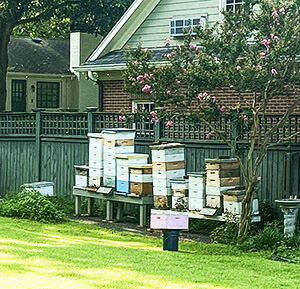
A bee yard is for the moment
While I have no way of counting for sure, I estimate that during all my bee years, I have dealt with 70 to 90 apiary locations. At this very moment, I have one — just one — apiary location, here at my home (and it needs help). Clearly, bee yards are not forever. But then again, neither am I.
There are no characteristics that make a location a “must use” location for a bee yard. An apiary location is not like a geologic formation that has unique characteristics. So, the beekeeper is searching for features that are good at the time. For a fact, sooner or later those coveted characteristics will morph into unsuitable features. It’s just reality. Apiary locations come, and apiary locations go.
Mystical apiary characteristics
When searching for an apiary, what should a beekeeper look for? Much like all the old jokes past, “Where does a beekeeper put an apiary?” has a truthful answer, “Anywhere they can.” Urbanization and improved farming practices have made getting apiary sites more of a challenge than in years past.
A hive or two can probably survive nearly anywhere, with exceptions being either of the Arctic poles or any of the world’s major deserts. A second reality is that most hobby beekeepers put their home apiary (or their principal apiary) in the only spot they have. So, their location’s primary characteristic (or only defining characteristic) might be that it’s the only site available to them.
So, why… (end of excerpt)


